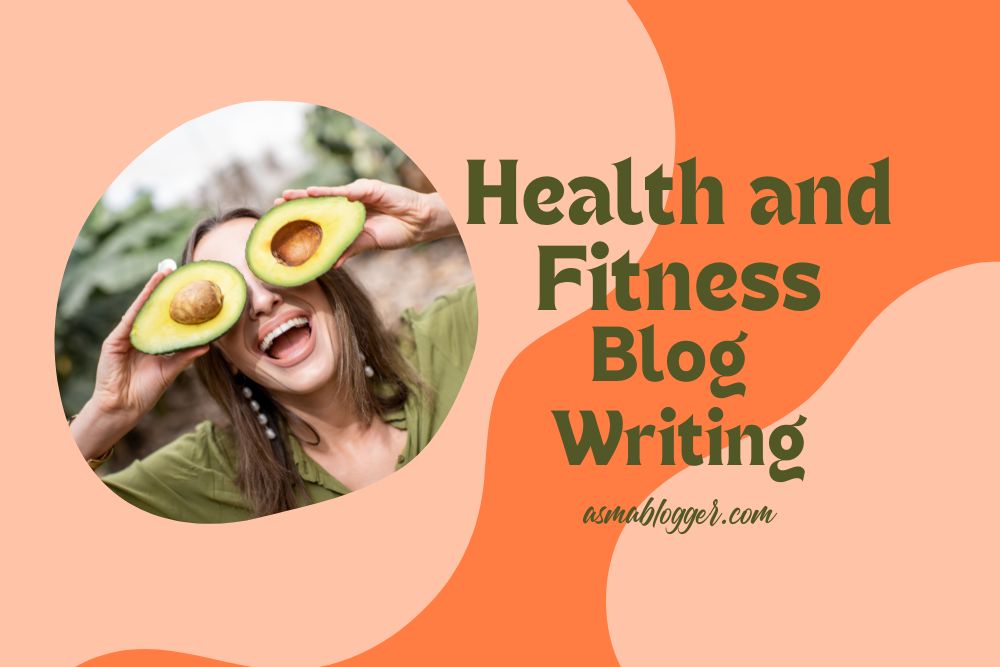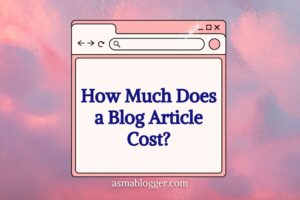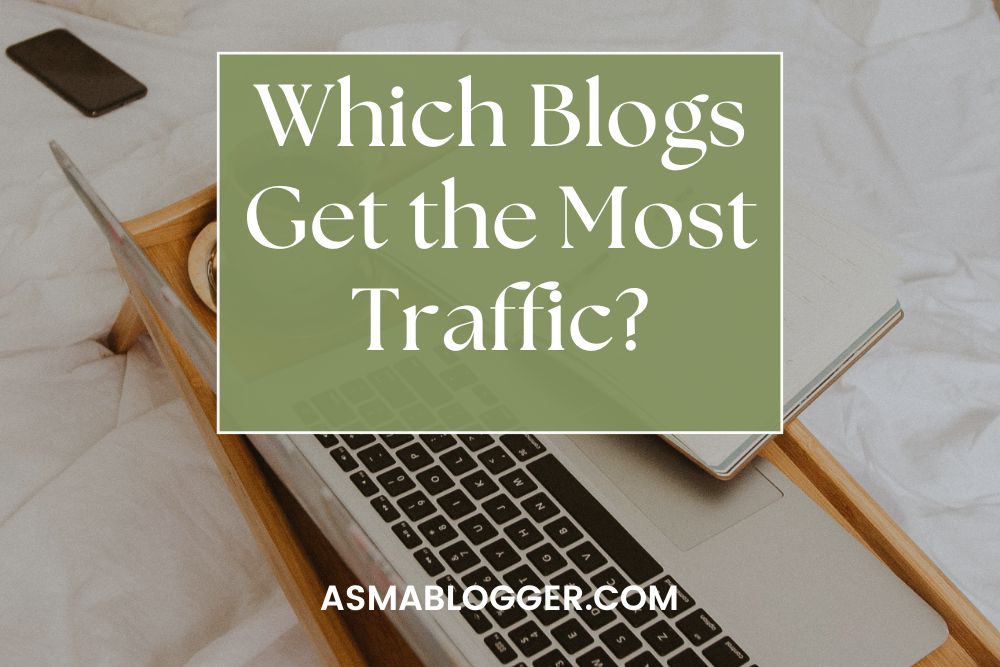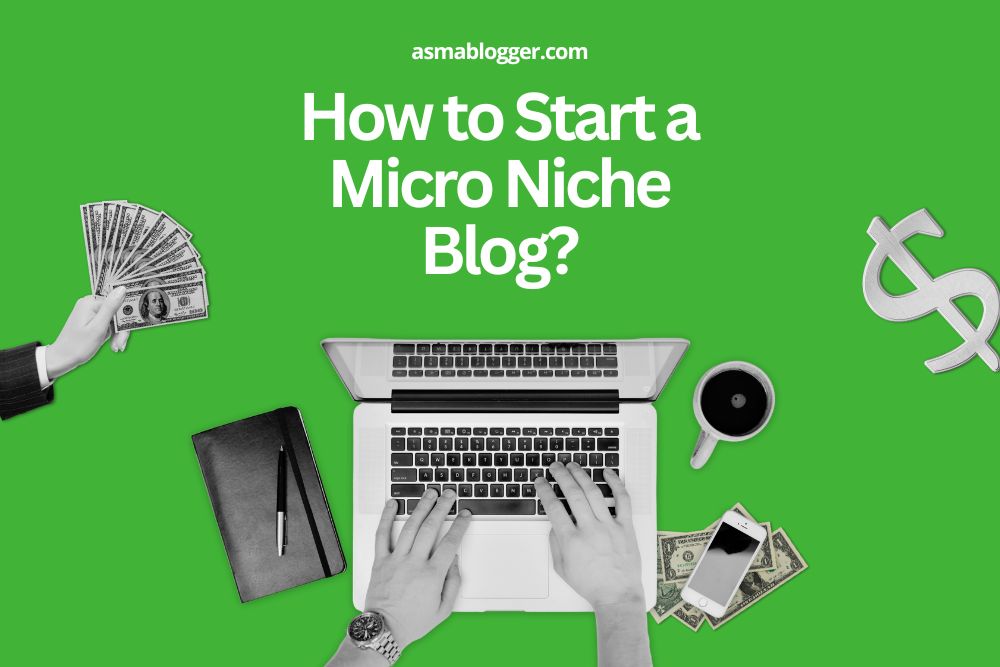Writing health and fitness blog content can be overwhelming, especially when your audience is searching for credible and engaging information that directly impacts their well-being. As someone with a BS in Biotechnology and an MPhil in Microbiology, I understand the critical role that accurate content plays in this field. I’ve seen how poorly written content can mislead readers and negatively impact your Google YMYL (Your Money or Your Life) rankings. That’s why I created this 101 Guide—to help you write content that not only stands out but also builds trust and meets Google’s high standards. Let’s dive in!
Table of Contents
ToggleWhat is Health and Fitness Blog Writing?

Health and fitness blog writing involves creating engaging and informative blog articles to promote wellness and fitness. This includes blog posts, social media updates, newsletters, and educational content like eBooks and white papers. Whether it’s for hospitals, fitness centers, or wellness retreats, the goal is to provide valuable information that connects with audiences and drives action, such as subscribing to a service or purchasing products.
Effective content writing in this field helps businesses stand out in a competitive market by delivering compelling and relevant information that resonates with their target audience.
Benefits of Health and Fitness Blog Writing for Your Business

Investing in high-quality health and fitness blog writing is essential for improving your business’s visibility online. By creating well-optimized, informative, and engaging content, your website is more likely to appear on the first page of search engine results, capturing the attention of potential customers. This not only drives more traffic to your site but also establishes your brand as a trusted authority in the health and fitness industry, leading to increased customer loyalty and long-term business growth.
1. Improves Search Engine Rankings
In today’s digital age, potential clients often begin their search for health and fitness services online. To capture their attention, your business needs to rank prominently on search engine results pages (SERPs). High-quality health and fitness blog writing is a powerful tool to achieve this.
By incorporating effective SEO strategies, such as keyword optimization and content structure, your website can climb the ranks, making it more visible to potential customers. This not only increases website traffic but also attracts organic leads, ultimately driving business growth.
2. Connects You with Your Target Audience
Health and fitness blog writing acts as a bridge between your business and your target audience. It helps simplify complex concepts and delivers them in an accessible, engaging manner. Whether you’re explaining the benefits of a new fitness routine or the importance of a balanced diet, well-crafted content can make these topics relatable and understandable.
By addressing your audience’s needs and concerns, you establish your brand as a trusted source of information, establishing a loyal community of customers.
3. Drives Long-Term Business Growth
Investing in health and fitness blog writing is a cost-effective strategy that yields significant long-term benefits. Unlike traditional advertising, which often has a limited shelf life, content marketing continues to attract and engage customers over time.
High-quality content not only educates and informs but also builds trust with your audience. This trust translates into repeat visits, higher engagement, and ultimately, increased sales. Moreover, professional content writers save you time and resources by consistently delivering valuable content that aligns with your business goals.
4. Supports a Comprehensive Marketing Strategy
Health and fitness blog writing is more than just creating blog posts or articles; it’s about crafting a cohesive marketing strategy that encompasses all aspects of your brand’s communication. A well-planned content strategy integrates various marketing elements, such as social media, email newsletters, and SEO, ensuring a unified message across all platforms.
This holistic approach not only amplifies your brand’s voice but also ensures that your content reaches the right audience at the right time, enhancing your overall marketing effectiveness.
Related Post: How to Write a Collaboration Email That Closes the Deal?
How to Create a Content Plan for Your Health and Fitness Blog?
Creating a well-structured content plan is crucial for your health and fitness brand to effectively communicate with your target audience. A comprehensive content strategy ensures that you deliver the right message through the most suitable channels, catering to the unique needs of your audience.
1. Understand Your Audience and Goals
Before crafting content, it’s essential to understand who your audience is and what they need. Are they beginners looking for workout tips or seasoned athletes seeking advanced nutrition advice? Defining your audience allows you to tailor your content to their specific interests and pain points.
Additionally, clarify your goals—whether it’s increasing brand awareness, driving traffic, or boosting conversions—so that each piece of content aligns with these objectives.
2. Choose the Right Content Formats
Different content formats serve different purposes and cater to various audience preferences. Blog posts and articles are ideal for providing in-depth information and building authority on specific topics. Social media content, on the other hand, is perfect for engaging your audience with quick, visually appealing updates and motivational posts.
Video content can demonstrate workouts and offer a more personal connection with your audience, while podcasts and interviews allow you to dive deep into industry-specific discussions.
3. Develop a Content Calendar
A content calendar helps you plan and organize your content strategy over a period of time. It ensures consistent posting, which is key to maintaining engagement and building trust with your audience.
Include a mix of content types, such as blog posts, social media updates, videos, and podcasts, to keep your audience engaged. Also, consider seasonal trends and events in the fitness industry that could influence your content topics.
4. Optimize for SEO
SEO is a critical component of your content plan, ensuring that your content reaches the right audience through search engines. Research relevant keywords that align with your brand and audience needs and incorporate them naturally into your content.
Focus on on-page SEO elements like meta descriptions, headers, and alt text for images. Additionally, consider local SEO if you operate a physical location, ensuring that your brand appears in local searches.
Related Post: Content-Centric SEO: A Comprehensive Guide
5. Monitor and Adjust Your Strategy
Creating a content plan is not a one-time task; it requires ongoing monitoring and adjustments. Use analytics tools to track the performance of your content—such as engagement rates, website traffic, and conversion metrics—and make data-driven decisions to refine your strategy.
Stay flexible and open to changes based on audience feedback and evolving industry trends.
How to Write Engaging Health and Fitness Blog Content?

Creating compelling health and fitness content is essential for connecting with your audience and providing them with valuable information. To craft content that resonates and drives engagement, consider these key strategies:
1. Understand Your Audience
Before you start writing, get to know your audience. Who are they? What are their health and fitness goals? What challenges do they face? Understanding these aspects allows you to tailor your content to address their specific needs.
For instance, if your audience consists of busy professionals, focus on practical tips for incorporating exercise into a hectic schedule or offer quick, nutritious meal ideas. The more you align your content with their needs, the more effective it will be.
2. Highlight Benefits Over Features
When discussing health and fitness topics, emphasize the benefits rather than just listing features. Instead of merely describing a new workout routine or diet plan, illustrate how it can improve the reader’s life—such as boosting energy levels, enhancing mood, or promoting overall well-being.
This approach helps readers see the tangible value in your content and motivates them to take action.
3. Incorporate Storytelling
Storytelling is a powerful tool in content creation. People connect with stories much more than with dry facts or statistics. Share success stories, whether from clients who achieved their fitness goals using your advice or from your own personal journey.
These narratives make your content more relatable and memorable, fostering a deeper connection with your audience.
4. Provide Actionable Advice
Readers seek health and fitness content to find practical ways to improve their lives. Ensure your content includes actionable tips and advice. Whether you’re offering workout routines, meal plans, or wellness strategies, provide clear, step-by-step instructions that readers can easily implement.
This not only positions you as a knowledgeable authority but also helps build trust with your audience.
5. Use Engaging Visuals
Visuals play a crucial role in capturing and maintaining attention. Incorporate images, infographics, and videos to complement your text and make complex concepts easier to understand.
For example, use infographics to break down a nutrition plan or videos to demonstrate exercise techniques. Ensure these visuals are relevant and add value to the content.
6. Maintain Authenticity
Authenticity is key in the health and fitness industry. Readers are drawn to content that feels genuine and transparent. Be honest about your expertise and the results readers can expect.
Share your values and mission openly to build credibility and foster trust. Authentic content resonates more deeply and helps establish a loyal audience.
7. Address Common Questions and Misconceptions
Anticipate and address common questions or misconceptions in your content. This not only shows that you understand your audience’s concerns but also helps preemptively clear up any confusion.
For example, if you’re writing about a new fitness trend, address potential counterarguments and provide evidence-based responses to common doubts.
8. Edit and Revise Thoroughly
Take the time to refine your content before publishing. Review your draft to ensure clarity, accuracy, and engagement.
Consider getting feedback from peers or colleagues to identify any areas for improvement. Allow some time between writing and final proofreading to approach your content with fresh eyes.
How to Analyze Your Health and Fitness Blog Content Performance?

Analyzing the performance of your health and fitness content is crucial for ensuring that your efforts yield tangible results. Without regular analysis, it’s challenging to understand what’s working, what needs improvement, and how to adapt your strategy for better outcomes. Here’s how you can effectively analyze your content performance to drive success.
1. Set Clear Performance Metrics
Before diving into data analysis, establish clear and measurable key performance indicators (KPIs) aligned with your business goals. These could include conversion rates, engagement rates, audience growth, page views, organic traffic, and bounce rates.
Defining these metrics helps you focus on what’s most important and provides a clear framework for evaluating your content’s effectiveness.
2. Track Conversion Rates
Conversion rates are a critical metric that indicates how well your content prompts visitors to take action, whether it’s signing up for a newsletter, purchasing a product, or following your brand on social media.
By monitoring these rates, you can assess the effectiveness of your calls-to-action (CTAs) and identify opportunities to optimize your content for higher conversions.
3. Measure Engagement Rates
Engagement rates reflect how your audience interacts with your content through likes, shares, comments, and other forms of interaction. High engagement rates are a positive sign that your content resonates with your audience and encourages them to interact.
Additionally, analyzing these rates can help you understand what types of content your audience prefers and how to tailor future content to maintain or increase engagement.
4. Monitor Audience Growth
Audience growth is another key indicator of your content’s success. This metric tracks how many new leads, subscribers, or sales are generated from your content. A steady increase in audience growth suggests that your content is attracting new visitors and converting them into loyal followers or customers.
This data can also highlight which types of content are most effective at drawing in new audiences.
5. Analyze Page Views and Organic Traffic
Page views and organic traffic are essential for understanding how well your content is performing in terms of visibility and reach. High page views indicate that your content is attracting a significant number of visitors, while organic traffic measures how well your content is ranking in search engine results.
By analyzing these metrics, you can gauge the effectiveness of your SEO efforts and identify opportunities to improve your content’s discoverability.
6. Evaluate Bounce Rate
Bounce rate measures the percentage of visitors who leave your site after viewing only one page. A high bounce rate can signal that your content isn’t engaging enough or that visitors aren’t finding what they’re looking for.
By evaluating this metric, you can identify areas where your content might need improvement, such as making your CTAs more compelling or ensuring that your content aligns more closely with user intent.
7. Benchmark Against Industry Standards
Finally, compare your performance metrics against industry benchmarks to see how your content stacks up against competitors. This benchmarking provides valuable context and helps you identify areas where you might need to improve.
So, regularly assessing your content against these standards ensures that your strategy remains competitive and effective.
Health and Fitness Blog Writing Ideas/Topics

Creating engaging and relevant content for health and fitness audiences involves covering a diverse range of topics that address their interests and needs. Here are some compelling content ideas to consider:
1. Exercise and Training Insights
Focus on various exercise routines such as strength training, cardio workouts, and yoga practices. Offer detailed guides, tips, and motivational content to inspire readers to stay active and reach their fitness goals. Additionally, highlight innovative workouts and emerging fitness trends to keep your audience engaged.
2. Nutrition and Diet Tips
Write about balanced meal planning, dietary trends, and nutrition advice. Share recipes, healthy eating habits, and the latest research on dietary supplements. Also, provide practical tips on how to incorporate nutritious foods into daily routines and debunk common diet myths.
Related Post: How to Write a Nutrition Blog That Ranks and Converts Readers?
3. Wellness and Mindfulness Practices
Explore topics related to mental health, self-care, and overall well-being. Discuss mindfulness techniques, stress management strategies, and the importance of maintaining a holistic approach to health. Offer advice on how to integrate wellness practices into a busy lifestyle.
4. Sports and Athletics Coverage
Create content specific to both amateur and professional athletes. Discuss training techniques, performance enhancement tips, and sports-specific advice. Include stories of athletic achievements, interviews with athletes, and insights into various sports disciplines.
5. Fitness Equipment Reviews
Provide detailed reviews and comparisons of fitness equipment, from home gym setups to wearable tech. Also, discuss the benefits and drawbacks of different products, and offer recommendations based on user needs and fitness goals.
6. Supplements and Nutritional Products
Write about the latest trends in supplements, including their benefits, potential side effects, and how to choose the right ones. Provide guides on integrating supplements into a balanced diet and highlight reputable brands and products.
7. Fitness Programs and Routines
Share structured fitness programs, workout plans, and routines designed for different goals and fitness levels. Include step-by-step instructions, visual aids, and progress tracking tips to help readers follow along.
8. Fitness Apparel and Gear
Discuss the latest trends in fitness apparel and gear. Review new products, share styling tips, and highlight how the right gear can enhance performance and comfort during workouts.
9. Personal Fitness Stories
Feature inspiring personal fitness journeys, success stories, and transformation tales. Include interviews with individuals who have achieved significant milestones and share their tips and experiences to motivate others.
10. Trends and Innovations
Stay current with the latest trends in the health and fitness industry, such as new workout technologies, emerging fitness apps, and innovative wellness practices. Provide insights into how these trends can benefit your audience and improve their fitness routines.
Challenges in Health and Fitness Blog Content Writing

Writing compelling health and fitness content comes with its unique set of challenges, especially in an industry crowded with information and diverse offerings. Here are some common hurdles and strategies to overcome them:
1. Standing Out in a Saturated Market
The health and wellness sector is teeming with content, from fitness programs to dietary supplements. With so many options available, distinguishing your brand becomes crucial.
Solution: Focus on crafting unique, engaging content that showcases your brand’s distinct voice and expertise. Leverage storytelling, share personal success stories, and offer exclusive insights or tips. Building a strong brand identity through consistent and high-quality content can help you stand out from competitors and build a loyal audience.
2. Navigating Information Overload
Consumers are bombarded with a vast amount of health-related information online, making it challenging to discern what’s credible and relevant.
Solution: Provide clear, well-researched, and actionable content that cuts through the clutter. Use straightforward language, avoid jargon, and present information in an easily digestible format. Infographics, bullet points, and summaries can help make complex information more accessible and trustworthy.
3. Overcoming Lack of Motivation
Staying motivated to pursue healthy habits can be difficult for many individuals, leading to a lack of engagement with fitness content.
Solution: Create content that inspires and encourages. Incorporate motivational stories, practical tips for overcoming obstacles, and interactive elements like challenges or quizzes. Additionally, highlighting real-life success stories and offering encouragement can help readers stay motivated and engaged with their fitness goals.
4. Simplifying Complex Terminology
The health and fitness industry often uses technical terms and scientific jargon that can be confusing for the average reader.
Solution: Break down complex concepts into simple, understandable language. Use analogies, examples, and visual aids to make intricate ideas more relatable. Providing explanations for terms and focusing on practical advice rather than technical details can help bridge the knowledge gap.
5. Addressing Time Constraints
Busy lifestyles can make it hard for people to prioritize health and wellness. Content that demands too much time or effort may be overlooked.
Solution: Develop content that caters to time-constrained individuals. Offer quick tips, easy-to-follow workout routines, and simple recipes that fit into busy schedules. Providing actionable advice that can be implemented without a significant time commitment will make your content more appealing and practical.
6. Navigating Limited Access to Resources
Not all readers have access to gyms, expensive supplements, or specialized equipment, which can limit their ability to follow certain health recommendations.
Solution: Focus on content that offers solutions for varying levels of access. Include budget-friendly tips, home workout ideas, and advice for making the most of limited resources. Empower readers with practical, accessible options that fit their circumstances.
7. Ensuring Content is Findable, Understandable, and Trusted
Making sure your content is easily discoverable and reliable is essential, especially in the health and fitness sector, which is often subject to rigorous scrutiny.
Solution: Optimize your content for search engines using relevant keywords and phrases. Prioritize clear, straightforward writing and provide sources or references to back up claims. Building E-E-A-T (Experience, Expertise, Authority, Trustworthiness) into your content can help enhance its credibility and visibility.
Health and Fitness Blog Content Writing Service
Just like your muscles need proper nutrition and exercise to grow, your website requires high-quality fitness content to thrive. With over 8 years of experience in the health and fitness field, coupled with a BS in Biotechnology and an MPhil in Microbiology, I bring first-hand knowledge across various health disciplines to every project.
By entrusting me with your content needs, you’ll benefit from:
- Increased SEO Performance: I use strategically researched keywords and best practices to boost your rankings on Google. Higher search engine visibility means more potential customers will find your products and services.
- Industry Expertise: My extensive experience in fitness content writing demonstrates your authority in the field. I provide accurate, insightful content that positions you as a trusted expert, which is crucial for building credibility and attracting clients.
- Effective Lead Generation: As your content ranks higher and attracts more traffic, you’ll see a natural increase in leads and sales. My focus on high-quality, engaging content translates directly into measurable business growth.
- Enhanced Brand Recognition: Every piece of content I create adds to your brand’s reputation. Well-crafted articles, blog posts, and social media updates help establish and reinforce your brand identity, making you more memorable to your audience.
You can learn more about my services here or contact me directly. Let me help you build a stronger brand and achieve your business goals with content that stands out and delivers results.
Conclusion: Health and Fitness Blog Writing
In the competitive world of health and fitness, compelling content is key to standing out and inspiring your audience. By writing great content, you ensure it not only motivates but also builds your brand’s credibility and drives sales. You can also strengthen your content strategy with professional writing services and watch your brand grow. Have thoughts or questions? Share them below!
FAQs: Health and Fitness Blog Writing
How to be a fitness content writer?
To become a fitness content writer, start by focusing on your personal fitness experiences and interests. Whether you’re a runner or a sports enthusiast, use your background to generate article ideas that resonate with readers. Build a network of fitness experts to enhance your content’s credibility, and don’t hesitate to connect with established writers in the field for insights. Explore various platforms, including niche websites and trade publications, to find your unique voice and audience.
How do I write a blog on fitness and health?
To write a compelling health and fitness blog, start by identifying a specific niche and understanding your target audience’s needs. Craft attention-grabbing, keyword-rich headlines that resonate emotionally. Structure your content effectively with actionable advice and incorporate multimedia elements like images or videos. Finally, optimize for SEO and promote your post on social media and through collaborations with influencers.















